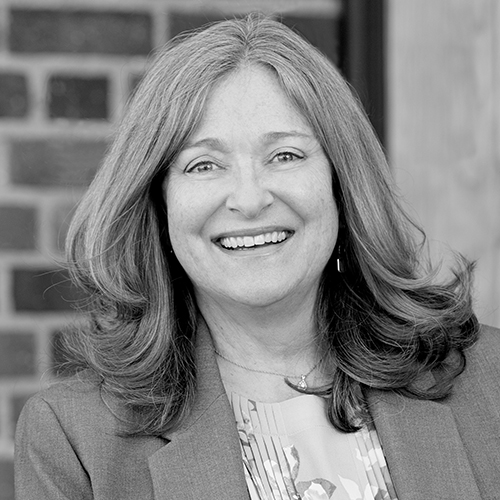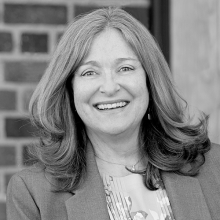The Allied Professions
 As jurisdiction upon jurisdiction considers authorizing allied legal professionals to provide limited legal advice alongside lawyers, the lawyers objecting are making strenuous exercise of their legendary argumentative skills. It will be the end of the profession. It is nothing short of a revolution, borderline heresy. The harm, oh such harm, that will come to unwitting consumers by these pretenders to legal competence.
As jurisdiction upon jurisdiction considers authorizing allied legal professionals to provide limited legal advice alongside lawyers, the lawyers objecting are making strenuous exercise of their legendary argumentative skills. It will be the end of the profession. It is nothing short of a revolution, borderline heresy. The harm, oh such harm, that will come to unwitting consumers by these pretenders to legal competence.
It goes something like that.
It is most surely not a revolution; it is much, much too slow for that. (Though Industrial Revolution II: Out of the Factory is coming to a profession near you in the form of ever-accelerating Artificial Intelligence). Allied legal professional programs are barely an evolution—the pace has been sub-tortoise.
The demand from everyone other than attorneys that legal services be made affordable and available is coming through loud and clear.
From Lawyers to Nonlawyers to Allied Legal Professionals
Perspectives may vary, but for some, it would seem that the greatest beneficiaries of the legal system are lawyers—not people with a legal matter in need of resolution. At some point it would be helpful to acknowledge that if most attorneys don’t want anything to do with cases that are as high in volume and stress as they are low in monetary value (either as an amount in controversy or in compensation), they should cease to maintain sovereignty over them. While they might not attract much interest from attorneys, these are cases that mean everything to the ordinary people involved—custody cases, housing issues, debt matters—and there are millions of them.
To the exasperation of the rest of us, why must lawyers be the rulers of a land they seldom visit? Whatever else happens in the legal biosphere—human nonlawyers or nonhuman lawyers—human lawyers are still poised to be coolly in control of their environs: 007, with a License to Bill.
Now to earn the heretical accusation: no one is saying this means the emperor has no clothes—it’s more a question of whether it should continue to be his empire only. The field of law can be represented by an inverted pyramid, its wide bottom teetering in the air, resting on a narrow point. That’s because 80% of those working in the legal profession are lawyers. A paltry 20% are other legal professionals. The world of healthcare, by contrast, is a many-tiered pyramid resting on an expansive base. Eighty percent of the positions below the top tier are filled by healthcare workers who are not doctors; in fact, they don’t have more than a bachelor’s degree.
If lawyers would flip over their architecturally unsound structure by permitting an expansion of the profession, they’d find they still sit at the top, now cushioned with broad tiers of separation between them and the coarse ground. Conceivably, they stand to be elevated by permitting new tiers of legal professionals functioning somewhere below the pyramid’s penthouse. They could be at the head of legal teams, some portions of which have a heartbeat and some a battery, all of which work reasonable hours.
Is there enough work to go around for lawyers and other legal professionals, whom lawyers have graciously referred to for decades as “non-lawyers?” Oh, skads of it. But let us step to the side of the trail a moment. “Non-lawyer.” How flattering. Hey kids, what do you want to be when you grow up? “A nonlawyer!!” Can we do no better than label people for what they are not? (And how lawyers missed the obvious “nottorney” is beyond me. So much catchier.)
But back to the volume of work issue, or rather, non-issue. There isn’t one. There are millions of people with legal issues who cannot afford to hire an attorney. Lawyers will continue to have clients who can afford to pay them, and other legal professionals will attract their own. Where there is overlap, and more of a competitive legal market, yes, the truth is the consumer stands to win. And the consumer has never been the winner in the entire length and breadth of the legal system.
The Medical Profession Already Won This Race
Lawyers are in good company—the world of medicine suffered some of the same skepticism decades ago, but they quickly conquered it and embraced new ways to better serve the public. The passage of the 1965 Medicare and Medicaid Act created a public benefit that improved healthcare outcomes for millions, but was poised to overwhelm the existing system, particularly for primary care physicians. New allied medical roles were developed, permitting educated and experienced professionals to fulfill day-to-day responsibilities without heavy physician oversight while having significant contact with patients.
The most prominent of these healthcare roles, Physician Associates (PA, and the new title preferred by those working as Physician Assistants) and Nurse Practitioners (NP), have had a mostly parallel and robust professional development.
Duke University pioneered the first PA program with an initial class of four former Navy medics graduating in 1967. For PAs, the medical profession developed an accreditation system that has a standardization of certification and examination, with the American Medical Association recognizing this new tier by 1970. State approval followed, though it wasn’t until 2000 that the 50th state (Mississippi) gave its approbation. In 2019, North Dakota became the first state to authorize PAs to practice without an association with a physician, a critical development in a rural state. (All other states require such an agreement.) There are currently 168,000+ PAs in the U.S., who have come through a three-year master’s program, 2,000 hours of clinical training, and have passed a national exam.
The first nurse practitioner’s program took place at the University of Colorado, with an initial intent of increasing access to care for pediatric patients. The founders, a physician and a nurse who both taught at CU’s medical school, described it as “a role expansion” for nurses. The first master’s level program was established at Boston College in 1967, and by 1973, more than 65 NP programs existed. Today, there are nearly 300,000 certified NPs.
While there is much overlap in the scope of treatment permitted by PAs and NPs, there are several noteworthy differences in these roles. PAs are trained using the medical model, where the focus is on the diagnosis and treatment of diseases. NPs are trained on the nursing model, which is focused on the patient, with an emphasis on preventive care. The training focus is something to consider in the development of allied legal professional roles—there could be certain roles that are heavily trained in the law, and others that are trained on more of a service model and provide lower levels of legal information.
In addition, PAs train as generalists—they can go into any field and have the option to switch specialties without recertification, while NP certifications require a specialization. PAs are required to undergo more significant physician supervision, which has been cited by some medical practices as the reason NPs may be more preferable hires—their regulatory structure is such that they require less oversight, lightening the supervisory burden for physicians. Both roles are in high demand nationwide—a demand that has not waned in the 50+ years that these allied medical roles have been in existence. PAs and NPs have eased healthcare demands, particularly in rural areas, where NPs are often the only available healthcare provider.
A Middle Tier that Meets People Where They Are
The medical profession provides additional examples of a robust middle tier of services.
True story: Pittsburgh, 1968. A small group of organizers obtained a federal grant that seemed modest enough: assemble a group of 44 students with no relevant background or experience and train them to go to work. But the coordinators were nowhere near that lofty number until literally going out into the streets the night before the first scheduled class and bribing people to attend with the promise of free food. They got their 44, and these trainees would become the nation’s first paramedics. Today, they number about 90,000, and with the related occupation of Emergency Medical Technician, they stand 250,000 strong. Lives saved: inestimable.
Faced with astoundingly high maternal mortality rates in the U.S., particularly for women of color, we have a subset of healthcare workers helping to alleviate this dire issue. Doulas, who have been around in an informal capacity for as long as there have been mothers and babies, became an organized healthcare profession in the 1970s, with the development of training and certification standards. The American College of Obstetricians and Gynecologists (ACOG) and the Society for Maternal-Fetal Medicine have reported that one of the most effective strategies in improving maternal health outcomes is the presence of a doula before, during, and immediately after childbirth.
Making the jump to our animal friends, those who access veterinary care want in on the reform, too. There are efforts underway to create a new tier, Veterinary Professional Associate (VPA), which would provide a level of service between that of veterinarian and veterinary technician. As in medicine and law, veterinary team shortages are increasing, which limits access to care across the board, exhausting providers and worrying pet owners. A 2022 effort to pass the Colorado Veterinary Practice Act was unsuccessful but leaves proponents undeterred. A recent survey of more than 500 Colorado pet owners revealed that over 80% would not hesitate to have their pet seen by a VPA. Colorado State University, home to one of the leading veterinary medicine programs in the country, is already devising a potential curriculum for this new role.
A Diversity of Roles, and Greater Diversity in the Professions
The concept of a “middle tier” role clearly is growing in popularity across professions, and there are further reasons to expand and support these allied professional roles. Medicine and law have a diversity problem. While both professions must expand the pipeline to their highest tiers and ensure all comers can succeed, allied professionals in any field today are more likely to be representative of their communities. They literally and figuratively speak the same language, meaning they are more likely to be trusted, accessed, and utilized. That first paramedic corps in Pittsburgh? All Black, and assembled through a community organization known as Freedom House. They responded to calls in their own neighborhoods until the desperate cry for their expertise emanated from all over the city. There is greater diversity among doulas than in other healthcare positions, and studies have shown that a significant motivator in their career choice is the opportunity to help mothers access a healthcare professional who shares their same racial and cultural identity.
It will be some time before AI develops anything close to a supportive human being helping you through childbirth, but if you have used or witnessed the use of generative AI tools such as ChatGPT, then you know it is a mind-blowing advance in how humans and software interact. But there is a frequent presumption that “everyone” has a laptop or smart phone. About 15% of Americans do not own a smart phone, and approximately 21% are functionally illiterate. An additional 30% can read only common words and phrases. There are millions of people without devices, without the capacity to use a device if they had one, and without wireless connectivity. We have legal deserts in many parts of the country—large swaths without a lawyer to be had. Legal professionals with AI competency—let’s call them Legal AI(ds) before someone slaps them with a nonmachine-machinist label—may prove essential everywhere legal services are offered.
The provision of legal services will look different in the future. It will likely encompass community efforts and a holistic view of the issues at hand, with lawyer involvement but as members of a comprehensive team. Collaboration with other professionals, with the efficiencies of AI as well as empowerment for those experiencing the issues, will not only help close the justice gap, but will be inevitably more effective. And it is the right generation coming along just now to help bring this about.
Letting the Next Generation Lead
Whenever there is money to be made, or influence to be had, count on a battle. It is much more decorous to claim protection of the masses rather than admit to a fear that these changes will hit one smack in the wallet. The persistence of lawyer skepticism—that college-educated, experienced, trained allied legal professionals will leave people with pressing legal issues worse off than if those people had tried to tackle the legal system unprepared and alone—actually leaves people worse off and obstructs the creation and approval of these critical new roles.
There’s a story about a youngster watching his mom prepare a holiday meal. When she cut a big slice off one end of a ham before putting it in the oven, our intrepid observer inquired as to why. “Well, that’s the way my big sister cooks a ham,” she said. Undeterred, the lad hunted down his aunt. “Why do you cut the end off of a ham before you cook it?” he asked. “Well, that’s the way our mom did it,” was her helpful reply. Grandma, now under direct appeal, responded with a shrug and a nonchalant, “Because my pan was too small.”
It was my recent foible to share this nugget with a Gen Z acquaintance, who muttered something under her breath that sounded suspiciously like “Boomer Hall of Fame”. Gen Z does not wait two generations to ask the right question, and the worst answer is because we’ve always done it that way. The legal system has long struggled to keep up with the times, remaining rooted in a monolith of obstinate tradition. In doing so, it has let the public drift further out of reach of legal services. The momentum, the righteousness, and the inevitability of the development of a tier of allied legal professionals is upon us.



